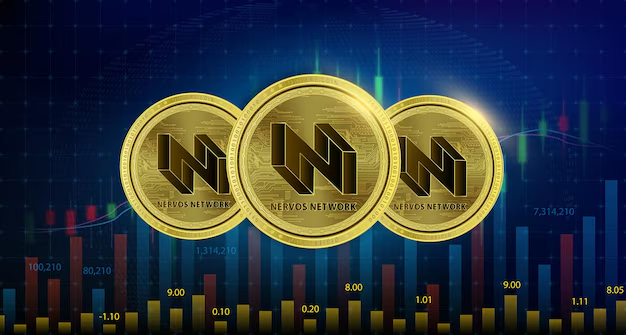In this article, I will focus on the Best China-Made Coins in the context of China’s top-rated blockchain projects.
VeChain, NEO, TRON, and Wanchain are China’s most innovative and most commercially-used blockchain technologies in the supply chain, smart contracts, DeFi, and cross-chain applications.
Learning about these coins will help investors and enthusiasts understand the innovative blockchain technologies coming out of China and the influence it is likely to have on the global market.
Key Points & Best China-Made Coins
| China-Made Coin | Key Points / Highlights |
|---|---|
| VeChain (VET) | Focuses on supply chain transparency; partners with major corporations; uses dual-token system (VET & VTHO). |
| Conflux (CFX) | China’s government-endorsed public blockchain; supports high throughput and regulatory compliance. |
| NEO (NEO) | Known as “Chinese Ethereum”; supports smart contracts and digital identities; eco-friendly dual-token model. |
| Ontology (ONT) | Identity and data verification network; focuses on trust and privacy; integrates with NEO ecosystem. |
| Nervos Network (CKB) | Layer-1 blockchain optimized for scalability and interoperability; focuses on long-term store of value. |
| TRON (TRX) | Blockchain for content sharing and entertainment; founded by Justin Sun; known for high-speed transactions. |
| IoTeX (IOTX) | Focuses on IoT and machine-to-machine economy; combines blockchain and secure hardware solutions. |
| Bytom (BTM) | Bridges physical and digital assets; supports asset tokenization and cross-chain transfers. |
| Fusion (FSN) | Cross-chain and interoperability platform; uses “Time-Lock” smart contracts for financial applications. |
| Waltonchain (WTC) | Integrates blockchain with IoT and RFID; designed for supply chain tracking and logistics management. |
| Red Pulse (PHB) | Decentralized research platform for China’s economy and markets; uses tokenized reward system. |
| Elastos (ELA) | Focuses on decentralized internet and digital rights; combines blockchain with peer-to-peer networking. |
| Loopring (LRC) | Layer-2 protocol for decentralized exchanges (DEXs); enables zkRollups for faster, cheaper trades. |
| Matrix AI Network (MAN) | Combines AI and blockchain; supports smart contracts optimized by artificial intelligence. |
| Achain (ACT) | Public blockchain for customizable smart contracts; focuses on simplicity and developer-friendliness. |
| Metaverse ETP (ETP) | Blockchain for digital assets and smart identities; aims to build a “blockchain-based internet”. |
| Quras (XQC) | Privacy-focused blockchain supporting smart contracts; integrates zero-knowledge proofs for anonymity. |
| Wanchain (WAN) | Cross-chain platform enabling interoperability between blockchains; supports DeFi and token bridges. |
18 Best China-Made Coins
1. VeChain (VET)
As a blockchain platform, VeChain focuses on improving the transparency of supply chains and business processes.
It operates on a dual-token model, with VET and VTHO serving respectively for value transfer and transaction payments.
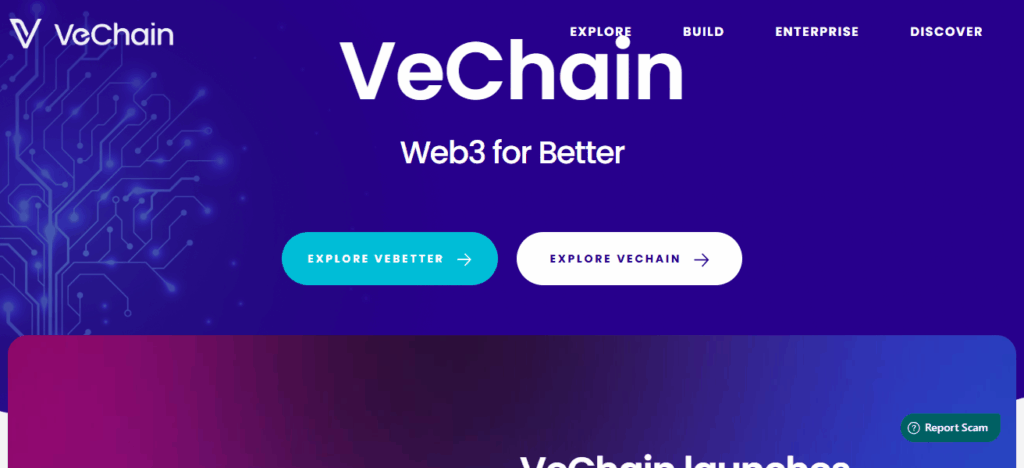
Leveraging the Internet of Things and RFID technology, VeChain offers real-time, accessible proof of monitoring goods for authentication and quality assurance.
It enterprise-grade, blockchain supply chain, and logistics partnerships with vehicle manufacturers such as BMW and retailers like Walmart China and industry audits firm PwC, showcase its position as a trust builder in the cross-border trade and consumer blockchain logistics trade.
Features VeChain (VET)
- Emphasizes supply chain transparency and anti-counterfeiting solutions using blockchain and IoT.
- Works on a dual-token system: VET for value transfers and VTHO for transaction fees.
- Has enterprise partnerships with BMW, Walmart China, and PwC.
- Real-time tracking and global goods verification.
2. Conflux (CFX)
Conflux Network (CFX) is one of the few public blockchains endorsed by China’s government. It aims to integrate decentralized technology with the legal protocols of China.
It is built with high performance in mind and employs a Tree-Graph consensus algorithm. It achieves Scalability while maintaining security and decentralization.
Conflux is ideal for global economic applications since it enables the cross-border circulation of data and assets.
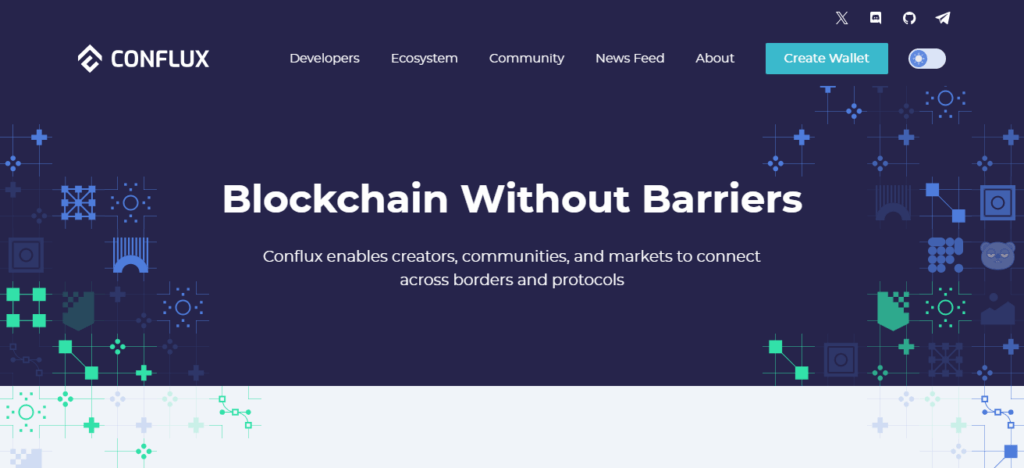
It is supported by leading Chinese institutions and is often referred to as “China’s answer to Ethereum.
China’s Regulated environment and Global compliance innovative Conflux with the international development of blockchains and decentralized finance (DeFi).
Features Conflux (CFX)
- The first and only government-backed public blockchain in China.
- Tree-Graph consensus for enhanced scalability, security, and decentralization.
- Cross-border data and value transfers.
- Built for regulation and enterprise use.
3. NEO (NEO)
NEO is a smart contract platform aiming to build a smart economy with digital assets, digital identities, and decentralized applications (dApps).
It aims for the Ethereum title as it is the “Chinese Ethereum” since it was founded in 2014 and is able to integrate multiple programming languages.
NEO’s unique dual-token governance and transaction model is framed with the NEO and GAS tokens.
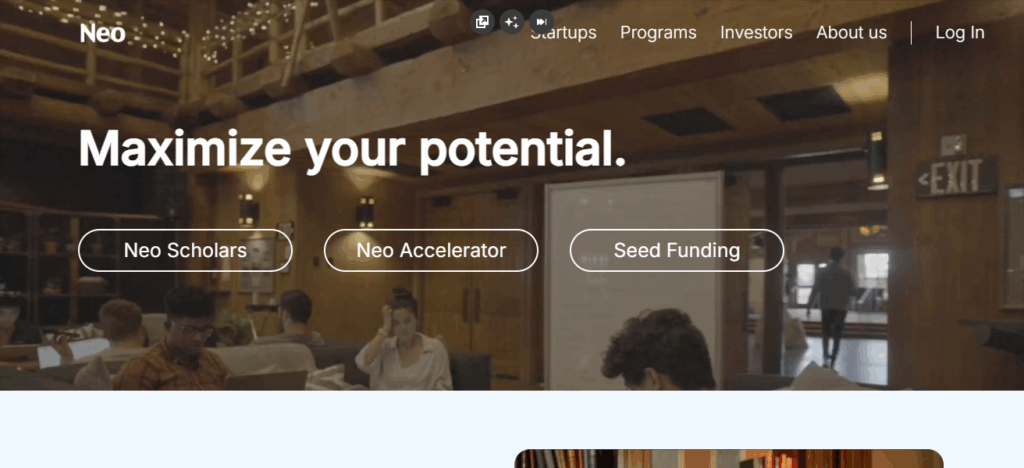
Cryptography is integrated as quantum-safe for NEO as it seeks to expand the unsafe blockchain technology to real world application and comply with Chinese regulations.
NEO’s economy vision has captured developer and enterprise attention making NEO one of the most recognized blockchain platforms in China.
Features NEO (NEO)
- Smart economy platform for digital assets, identities, and dApps.
- Supports dual tokens: NEO for governance and GAS for transaction fees.
- Multi-language support for global developers.
- Quantum-resistant cryptography for advanced security.
4. Ontology (ONT)
Ontology is focused on digital identity management, data security and trust management. It is one of the high performance blockchains.
Ontology was developed by the same Ontology team behind NEO. It enables businesses to create tailored blockchain solutions focused on privacy and identity.
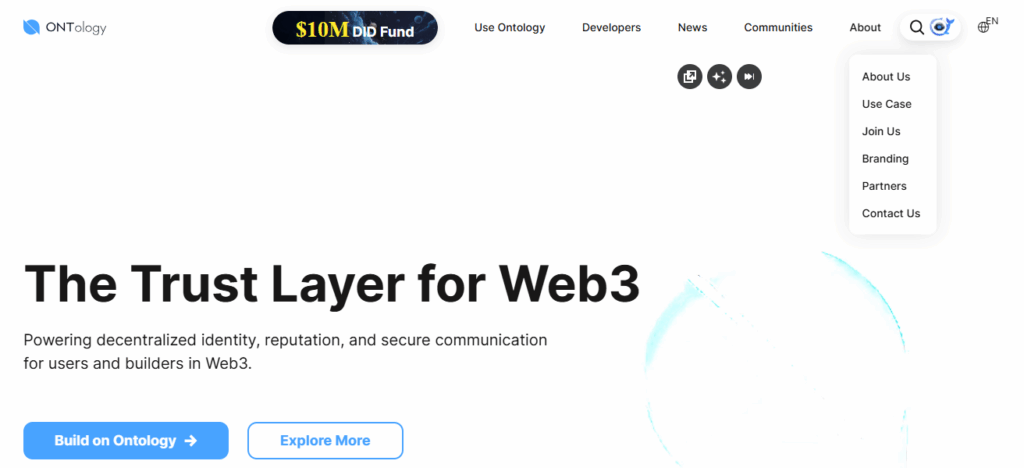
Ontology is unique in its decentralised identity system (ONT ID) system, where individuals and enterprises can secure and manage their data.
By ensuring interoperability and compliance with regulations, Ontology helps enterprises and traditional businesses adopt blockchain ecosystems, which helps digital and enterprise identity verification.
Features Ontology (ONT)
- Digital identity, data security, and trust management.
- Issues Ontology ID (ONT ID) for decentralized identity verification.
- Dual tokens: ONT for governance and ONG for network fees.
- Interoperable with other blockchain networks, including NEO.
5. Nervos Network (CKB)
Nervos Network is able to separately manage and efficiently scale computation and data storage. The proprietary token of Nervos Network, CKB (Common Knowledge Base), acts as a digital real estate asset.
CKB represents on-chain storage and is a currency to purchase on-chain data storage on the Nervos blockchain. It is capable of multi-chain asset management and supports the inter-working of Bitcoin and Ethereum.
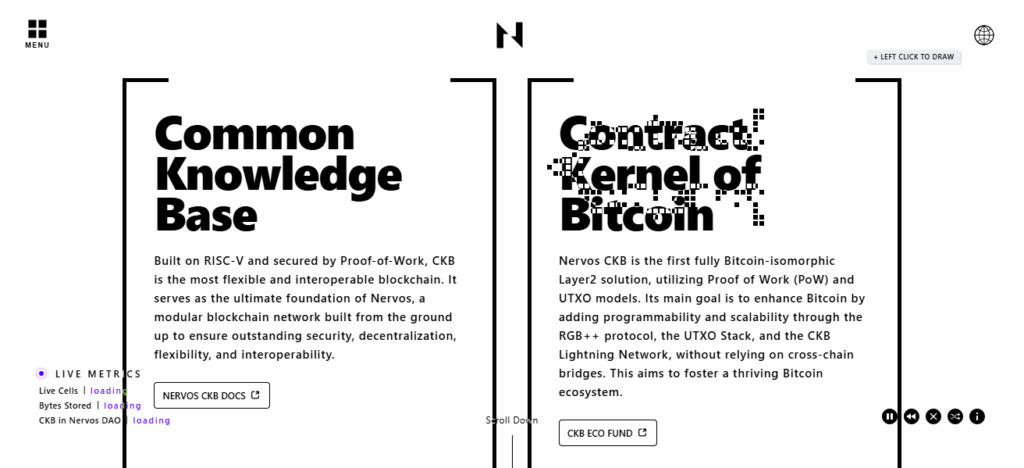
Nervos Network’s architecture enables the long term storage of data as well as the development of smart decentralised applications.
Venturing on to Layer-2, Nervos Network provides tolerance to multiple and existing secure and compatible blockchains while offering universal development tools.
Features Nervos Network (CKB)
- Layered architecture for scalability in separation of storage and computation.
- CKB is a token for on-chain storage.
- Supports multi-chain assets for interoperability.
- Emphasizing value preservation and eco-friendly blockchain technology.
6. TRON (TRX)
TRON was launched as a blockchain platform aimed to decentralize the web, especially in the entertainment, content sharing, and gaming industries.
It was founded by Justin Sun. It lets users publish, own, and profit from content without relying on middlemen.
TRON is one of the best networks available because of its high throughput and almost free transactions.
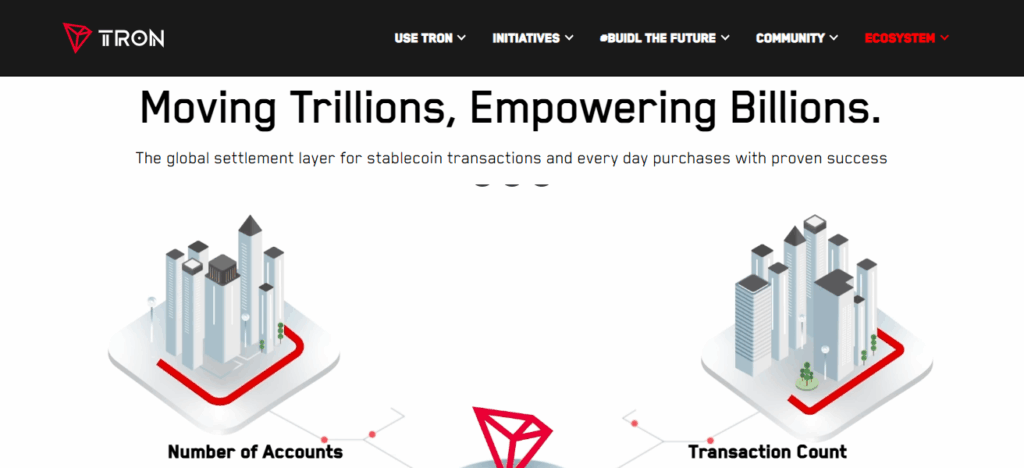
TRON offers a DeFi marketplace and NFT marketplace, and there is USDT stablecoin available on the TRON network.
TRON acquired BitTorrent, which increased its ecosystem to millions of users. TRON is an excellent blockchain for digital media, gaming, and DApps because of how well it combines speed, scalability, and utility.
Features TRON (TRX)
- Distributed content-sharing services for users.
- High throughput and low transaction fees.
- DeFi and NFTs are available alongside other services and customizable tokens.
- BitTorrent was acquired to foster innovation in ecosystem adoption.
7. IoTeX (IOTX)
IoTeX is one of the companies that attempts to merge blockchain technology with the Internet of Things (IoT).
IoTeX was founded in 2017 and allows users to interact and share data in a secure environment. IoTeX combines blockchain technology with devices that respect users’ privacy, such as Ucam and Pebble Tracker.
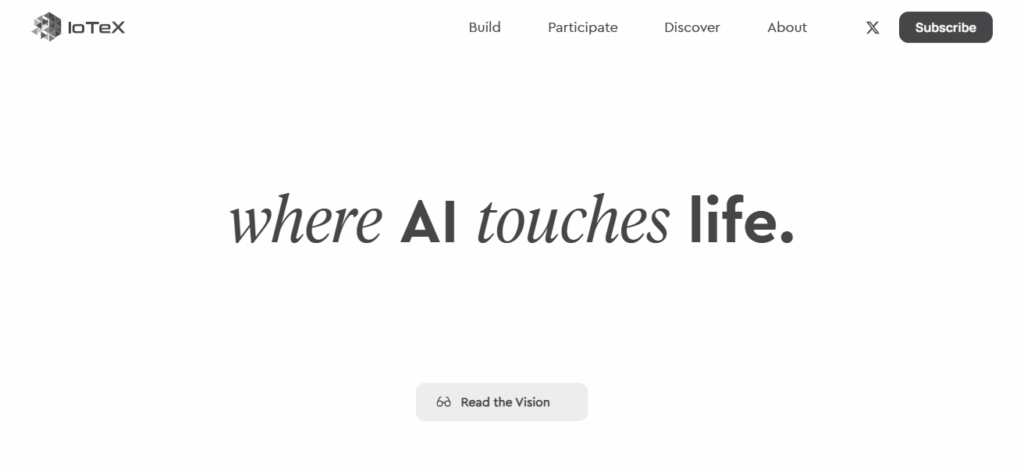
The IOTX token is used for governance, staking, and transactional purposes. Users are empowered to defend their digital identities and the platform helps to prove data ownership and integrity.
IoTeX is one of the leaders in enabling “Internet of Trusted Things” by decentralizing machine to machine transactions.
Features IoTeX (IOTX)
- Connects blockchain and IoT for secure exchange of data.
- Machine-to-machine transactions are supported.
- Governance and staking are powered by the native token IOTX.
- Privacy-preserving hardware such as Ucam and Pebble Tracker for real-world use.
8. Bytom (BTM)
The Bytom blockchain protocol is built to enable the tokenization of real-world assets such as securities, bonds, and properties and facilitate trading them on the blockchain.
Its application, contract, and transmission layer three architecture helps integrate developers and enterprises.
Bytom aims to provide interoperability between digital and traditional assets while increasing transparency and liquidity.
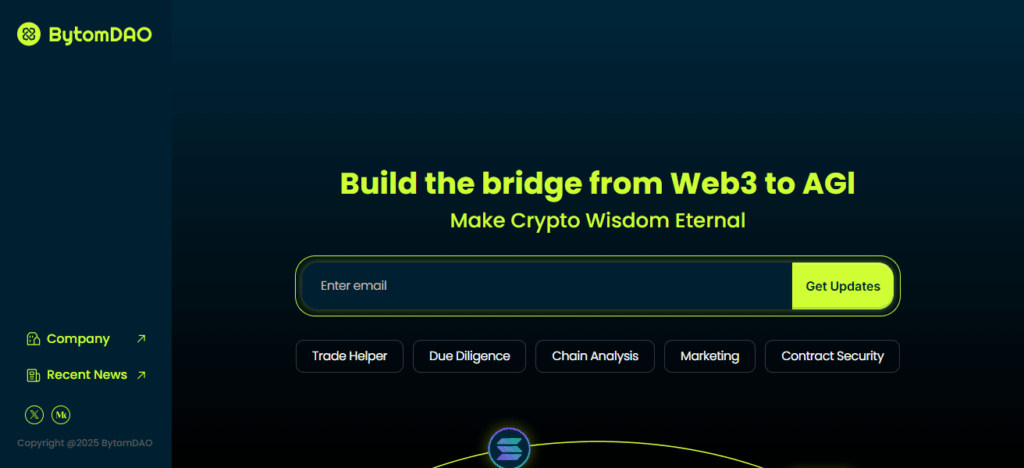
The Bytom protocol uses BTM tokens for asset issuance, payment of dividends to stakeholders, and governance on the blockchain network.
By integrating blockchain and asset management, Bytom helps financial institutions and companies seeking to digitize and modernize layers of their assets.
Features Bytom (BTM)
- Links digital tokens to assets in the real world.
- Bonds, property, stocks and other real-world assets can be tokenized.
- Multi-layer application, contract and transmission architecture.
- Transfers and manages assets from different chains.
9. Fusion (FSN)
Fusion focuses on facilitating cross-chain interoperability for DeFi. It is the first protocol to offer real interoperability between disparate blockchains using its patented DCRM technology, which secures assets on blockchains’ cross-chain and cross-border networks.
The Fusion protocol also helps offer composable financial tools like multi-sig loans, derivative swaps, and more, using the Time-Lock smart contract.
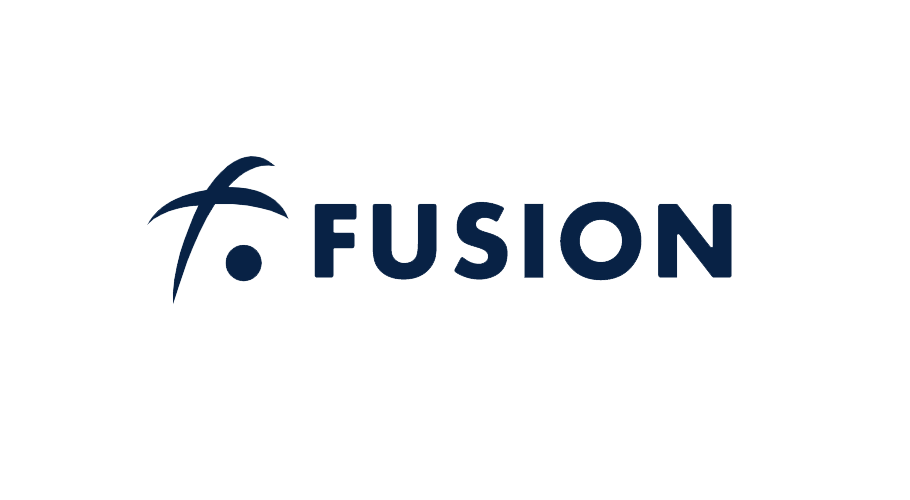
Founded by Dejun Qian, Fusion aims to build a completely interoperable financial system for digital assets on top of blockchain networks, integrating institutions and developers.
The FSN token powers the protocol and governance. Fusion promotes transparent and secure connections between the legacy financial system and digital finance
Features Fusion (FSN)
- Cross-chain interoperability via DCRM technology.
- Time-locked smart contracts for DeFi applications.
- FSN token used for network operations and governance.
- Cross digital assets, institutions, and developers securely.
10. Waltonchain (WTC)
Waltonchain integrates blockchain with Internet of Things (IoT) technology and RFID solutions for real-time supply chain management and tracking.
By RFID, supply chain traced and managed Waltonchain. Each product has a digital identity Waltonchain, counterfeiting and inefficiency, enhancing trust.
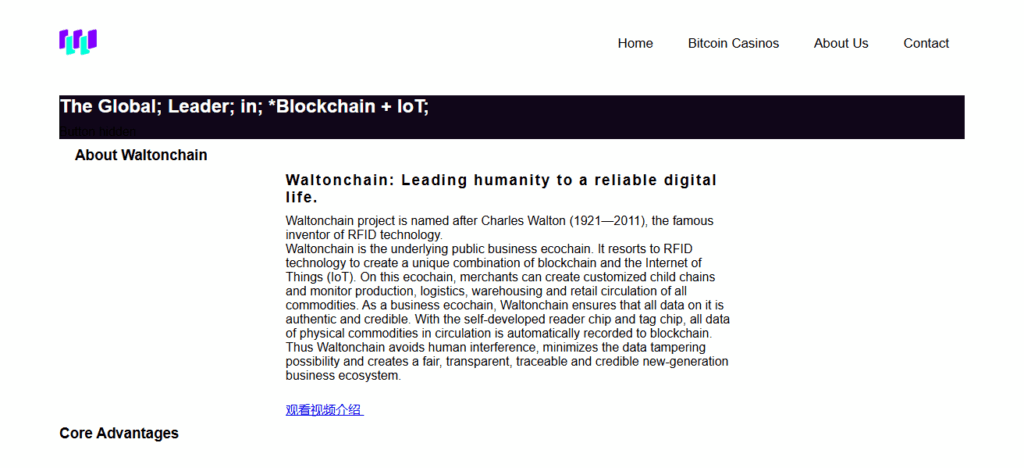
Each hybrid blockchain Waltonchain and sub-block chains for customized scalabiltiy. Hybrid blockchain systems focus smart supply chain, positioned Waltonchain and blockchain and logistics, retail, manufactutring, international trade.
Features Waltonchain (WTC)
- Combines blockchain and RFID technology for supply chain management.
- Eliminates counterfeiting through real-time tracking of goods.
- Sub-chain architecture for enterprise customization.
- Improved efficiency and transparency in logistics and retail.
11. Red Pulse (PHB)
Red Pulse (now Phoenix Global) blockchain-enabled research and content platform for China’s economy and capital markets. Analyst, researcher insights, PHB earned.
Research, content blockchain verified, trackable additionalapin source for trust Red Pulse strengthened. Red Pulse empowered overseas investors chinese market, insights, bridging language data.

Research economy tokenized Red Pulse, high-value content, knowledge earned. Red Pulse pioneering blockchain info markets systems.
Features Red Pulse (PHB)
- Distributed research platform on China’s economy.
- Employs blockchain technology to authenticate research.
- Contributors are rewarded with PHB tokens.
- Provides marketers access to China market insights.
12. Elastos (ELA)
Elastos wants to create a new version of the internet where people have control over their personal data and digital identities.
In order to provide a safe and secure online ecosystem, it integrates blockchain with peer-to-peer networking, runtime environments, and decentralized storage.
ELA, the platform token, facilitates governance and transaction functions. Elastos garners the the ability to provide decentralized applications to operate without the use of central servers, providing the user with a complete absence of censorship and privacy.
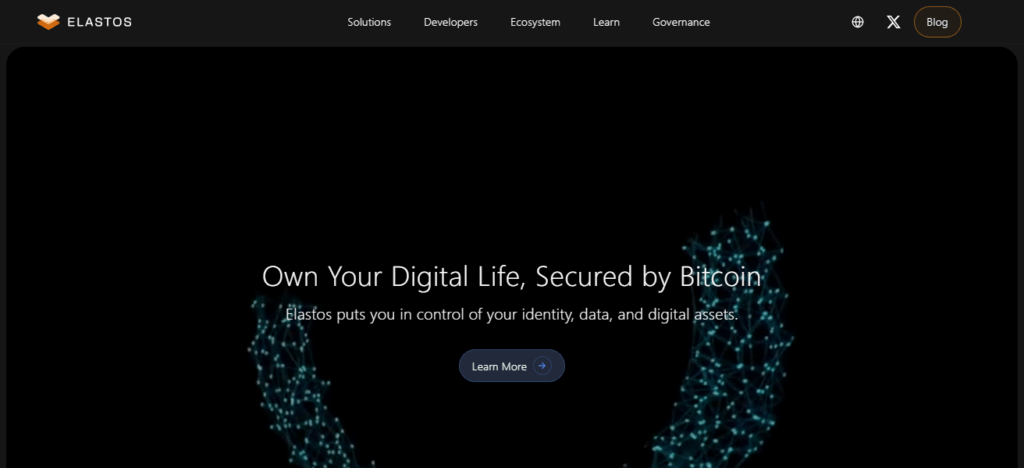
Elastos focuses on taking blockchain consensus out of the app execution process to provide a safe, scalable, and secure environments.
With infrastructure internet and blockchain, Elastos focuses on providing a web with ownership, safety and user freedom.
Features Elastos (ELA)
- Develops a decentralized internet ecosystem with data ownership.
- Supports decentralized applications (dApps) without centralized servers.
- Integrates blockchain with peer-to-peer (P2P) networks and data storage.
- ELA token is used for governance and transaction settlement.
13. Loopring (LRC)
Loopring uses zkRollups as a Layer-2 protocol for decentralized exchanges (DEX) to improve their functionality. Users benefit from quick, inexpensive, and secure trading without Ethereum-level security.
The LRC token allows users to stake, participate in governance, and claim discounts on transaction fees.
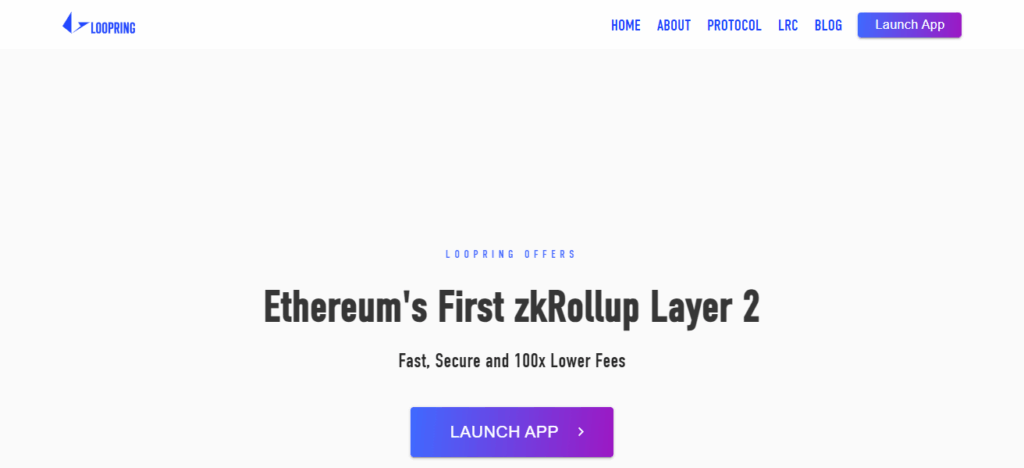
Loopring incorporates Sybil-resistance for unauthorized systems to improve security and provide ecosystem balance.
The system promotes a wide range of applications and facilitates the shifting of value between wallets.
It uses zero-knowledge proofs to complete over 2000 Quotas with a range of 200-300 transactions processed within a second, achieving scalable trading and promoting the mass use of decentralized finance
Features Loopring (LRC)
- DEX Layer-2 Protocol with zkRollups.
- Facilitates rapid and economical transactions.
- LRC token is used for payment of a transaction fee and governance.
- Creates scalable payment systems and wallet integrations.
14. Matrix AI Network (MAN)
Matrix AI Network combines artificial intelligence with blockchain technology to develop smart contracts and self-governing systems that are intelligent and adaptive.
Established in 2017, it uses AI to optimize blockchain operations, anomaly detection, and security.
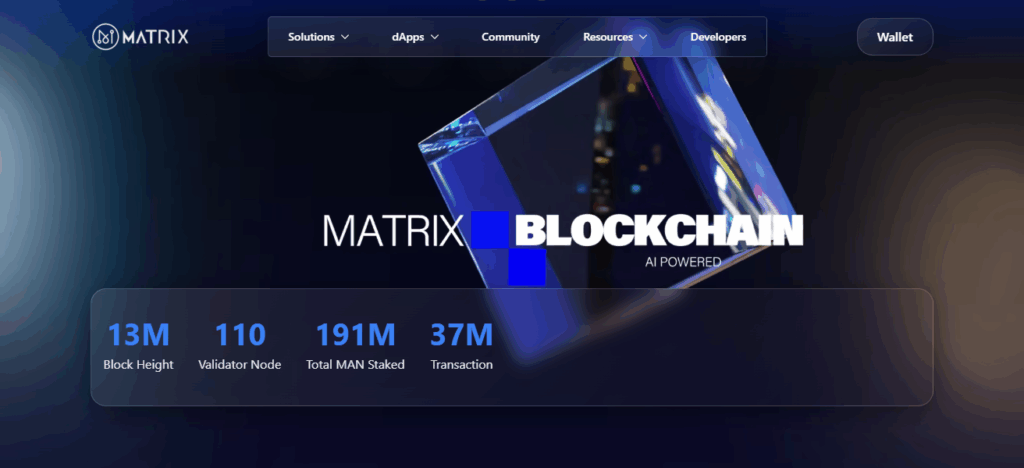
Its native token, MAN, enables transaction, staking, and AI service access. The network seeks to automate processes without human intervention in data management and decision-making across healthcare, finance, logistics, and other sectors.
Matrix AI Network combines blockchain and AI to develop self-adjusting decentralized systems that realign their efficiency, performance, and usability in real-life applications to unprecedented levels.
Features Matrix AI Network (MAN)
- AI and blockchain convergence for smart contract optimization.
- AI-enabled anomaly detection for system security.
- MAN token facilitates transactions, staking, and payment for AI services.
- Facilitates automated decision systems and data management.
15. Achain (ACT)
Achain is a public blockchain platform that allows developers to build decentralized applications, smart contracts, and digital assets with ease.
Its modular, customizable design provides a wide range of blockchain uses. Achain’s “Fork Theory” enables developers to generate independent blockchains from its principal network, enhancing flexibility and scalability.
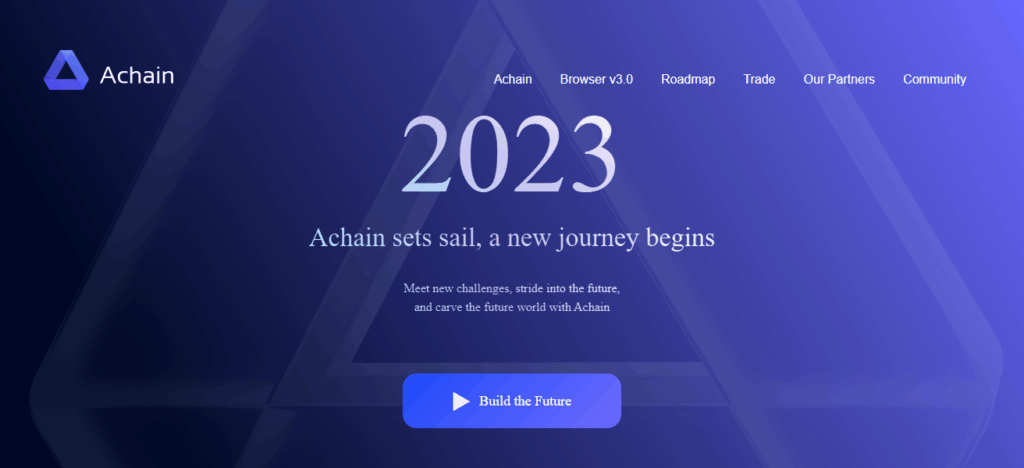
The ACT token enables governance, smart contract execution, and transaction payments. Through simplicity, performance, and interoperability, Achain’s mission is to provide businesses and developers fast, secure, and flexible blockchain access to meet their needs.
Features Achain (ACT)
- Public blockchain for smart contracts and decentralized applications (dApps).
- Modular and customizable for governance.
- “Fork Theory” to create autonomous sub-chains.
- ACT token used for governance, transactions, and smart contract execution finalization.
16. Metaverse ETP (ETP)
Metaverse ETP aims to offer individuals and organisations digitally verified identities for more secure online transactions.
It is considered as ‘China’s answer to Ethereum’ as it aspires to build a ‘blockchain-based internet’ for more responsible online interactions.
The ETP token is used for transactions and asset creation, network governance, and the overall powered automation functions of the network.
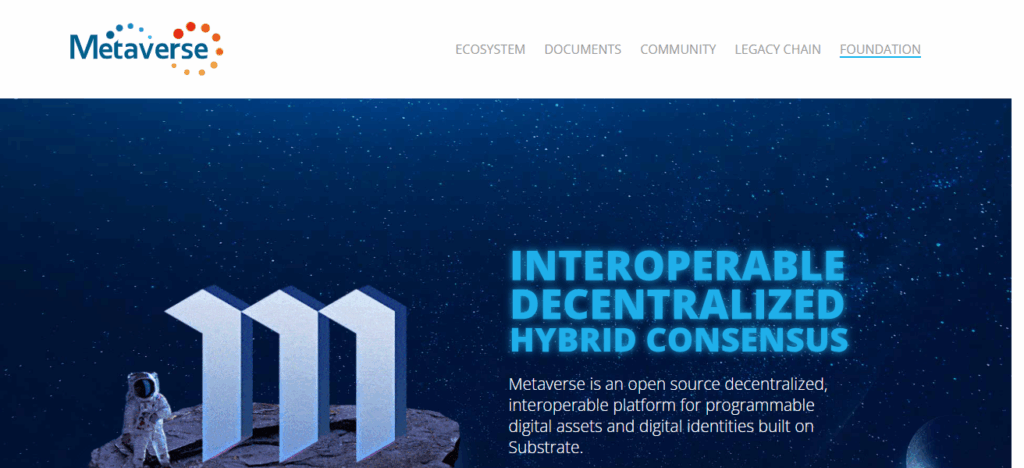
Metaverse ETP verifies identity in the real world for enhanced integration trust and compliance.
The ecosystem’s layers in addition to financial services offer automation and integration services on DApps.
High compliance and trust is necessary for everyday business, social transactions, and application interoperability. That is the primary aim for Metaverse ETP resilient systems approach.
Features Metaverse ETP (ETP)
- Focus on digital assets and identities.
- Users and enterprises can have verifiable digital identities.
- Supports digital applications and decentralized finance.* ETP token utilized for transactions, governance, and creating assets.
17. Quras (XQC)
Quras is a blockchain technology developed with privacy in mind. It offers confidentiality even with use of smart-t contracts.
With zero-knowledge proofs and with the use of ring signatures, customers have the possibilities of opting for transparent or private transaction.
This versatility is ideal for enterprises whose compliance with the law is a priority. Quras offers the XQC token for payment, staking and governance.
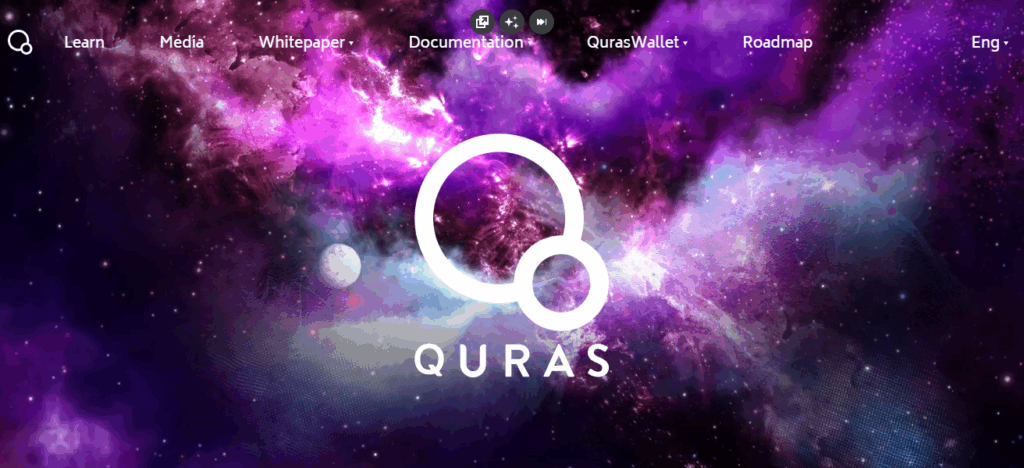
Payment, staking and governance as design for the platform is aimed for constructed privacy-preserving, decentralized applications.
As in most other applications, Quras focuses most of its real world decs privacy centric use cases on valueable and sensitive use cases on healthcare and finance. This is ideal as legislation and compliance most of the time focuses on the real use cases.
Features Quras (XQC)
- Blockchain specializes in privacy and smart contracts.
- Conducts confidential transactions through zero-knowledge proofs.
- Offers public/private transactions for flexibility.
- XQC token facilitates payments, staking, and governance.
18. Wanchain (WAN)
Wanchain is a cross-chain blockchain technology specialized in interoperability. It connects disparate systems across multiple heterogeneous technology stacks including Bitcoin, Ethereum, and Polkadot.
It connects isolated blockchains into a unified decentralized ecosystem. Wanchain enables the secure transfer of assets across blockchains through the use of advanced cryptographic techniques.
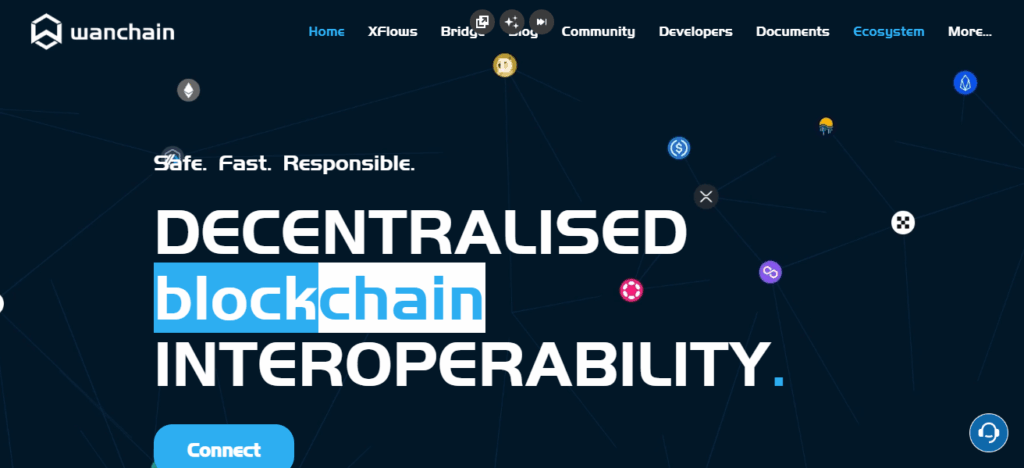
The ecosystem is sponsored by the WAN token. In addition to blockchain interoperability, Wanchain also implements cross-chain decentralized finance (DeFi), non-fungible tokens (NFTs), and cross-chain bridges for developers.
By providing a complete set of tools, Wanchain enables the expansion of blockchain technology beyond isolated ecosystems and facilitates the connection of disparate digital economies.
Features Wanchain (WAN)
- Interoperable blockchains and cross-chain transactions.
- Supports DeFi, NFTs, and cross-chain asset transfers.
- For staking, governance, and fees, the WAN token is used.
- Isolated blockchains are bridged to a unified ecosystem.
Conclsuion
In conclusion, China-made cryptocurrencies have proven their worth in the global blockchain ecosystem.
VeChain, NEO, TRON, and Wanchain have built their focus on supply chain, smart contracts, DeFi, and cross-chain interoperability.
The innovative strength coupled with regulatory compliance and enterprise adoption illustrates China’s increasing influence in the blockchain world
While providing secure, scalable, and viable blockchain solutions to businesses and end-users worldwide.
FAQ
China-made cryptocurrencies are blockchain projects developed in China, often focusing on enterprise solutions, DeFi, and smart contracts.
VeChain (VET) and NEO are among the most widely recognized due to enterprise adoption and developer support.
Some projects like Conflux are government-endorsed, but crypto trading regulations in China are strict.
Supply chain, digital identity, DeFi, IoT, NFTs, and cross-chain interoperability.
NEO, Ontology, and Achain are primarily smart contract platforms.


